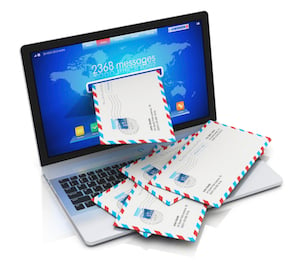 As marketers we have a responsibility to make our campaigns as effective and efficient as possible. Over the past few years, that has often meant looking to inbound channels like search, social and content for lead generation.
As marketers we have a responsibility to make our campaigns as effective and efficient as possible. Over the past few years, that has often meant looking to inbound channels like search, social and content for lead generation.
But as inbound has matured and merged with traditional channels, the way we think about marketing has become just as important as the way we execute marketing.
Inbound marketing isn’t just a practical technique; it’s a guiding philosophy. And the more effort we put into our inbound channels, the more we can reconsider how we do traditional outbound marketing.
Why? Because we still need outbound marketing for short-term, quick wins while we focus on the long game that is inbound marketing. But rather than standing in opposition to one another, the two styles should be complementary.
So how can you make your traditional outbound marketing work with your inbound marketing efforts? Here are three tips to get you pointed in the right direction:
1) Measure Engagement
One of the biggest advantages of inbound marketing is the ability to measure the engagement level of your leads. Because inbound channels are often digital, tracking a person from a raw lead to a customer—and knowing the steps that get them there—has made it possible to determine how well a channel performs.
But outbound marketing has often been focused on just one step: The final conversion. As anyone who has ever done an outbound campaign knows, it’s not unusual to have leads neither engaged nor qualified fill out that form for “Free Trial” or “Request a Consultation.” What’s even more common is hearing from sales that none of the leads are qualified.
Using lead scoring, you’re able to determine which leads at the bottom of the funnel are truly qualified before they go to sales and which leads in the middle of the funnel might be ready for a warm call from the sales team. This helps sales prioritize the leads they need to talk to right away, and which ones they can chat with when they have no “hot” leads to pursue.
2) Minimize Interruption
One of the biggest differences between inbound marketing and outbound marketing is interruption. Inbound leads, by nature, come to you and opt-in for engagement, while outbound leads rarely have the option to opt-in to your marketing. In order to minimize unnecessary interruption, which can be a costly endeavor, it’s important to do two things:
- Make outbound channels opt-in channels whenever possible
- Focus on hyper targeting via outbound channels
For example, don’t just send an unsolicited direct mailing to a list of contacts who haven’t heard from you before. You can spend your money more wisely by sending that piece to a smaller list of leads who have previously engaged with your brand, online or offline.
If the outbound channel you’re communicating through doesn’t have that option, such as paid social advertising, email marketing or print advertising, then make sure you’re putting your effort into finding the most relevant list of contacts for communication. This can be targeting companies on LinkedIn, job titles and industry via email marketing or the most relevant trade publications for print advertising.
To get an even bigger bang for your buck with all of these channels, be sure to keep the next tip in mind...
3) Integrate Experiences
Inbound and outbound, as with digital and traditional marketing, have often been siloed into their own little worlds. But the best use of marketing channels and tools today requires marketers to think about how each channel works with all the others.
So if you’re at a tradeshow, rather than capturing leads on a digital scanner or putting out a fish bowl for business cards, log hot leads into your marketing system immediately on a tablet or smartphone and start sending lead nurturing emails right away. If you’re running a print advertisement or sending direct mail, include a landing page URL for a piece of educational content rather than a just the bottom of the funnel offer.
The further apart inbound and outbound are, the less likely it is either will have maximum impact. Once you have the two functioning as one, with emphasis on making outbound more inbound, you’ll have the ability to determine which channels really are the best channels for your marketing.
This post originally appeared on Kuno Creative's blog. Kuno Creative is a HubSpot Partner located in Avon, OH.

